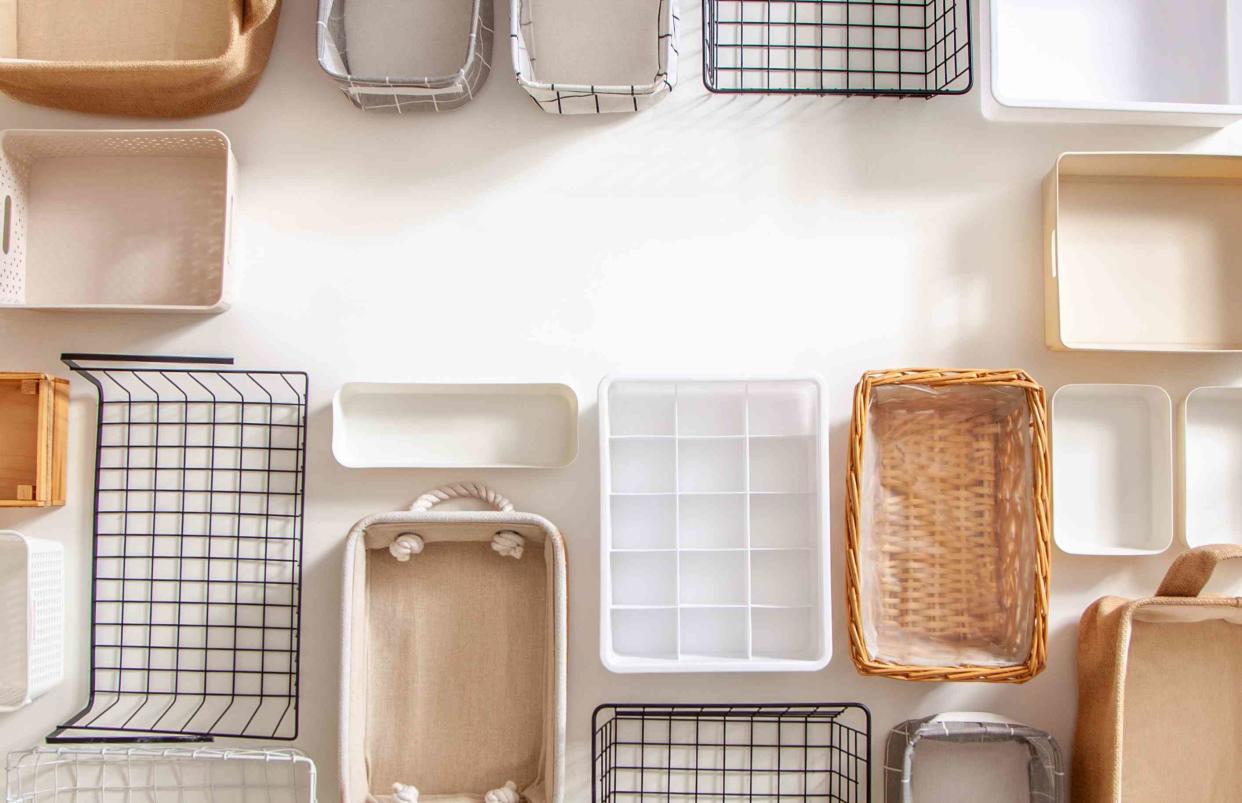The "Core 4" Method is the New Decluttering Strategy Pro Organizers Swear By
Here's how the Core 4 organizing method can take your space from chaos to calm.

Kostikova/Getty Images
Organized spaces help us live better. They make it easier to find items we’re looking for, help our spaces feel calm, and can even save money in the long run since we’re less apt to misplace or forget about items when our belongings are orderly. That said, organizing our home and keeping it that way can sometimes feel overwhelming. Adhering to a specific organizing approach—like the Core 4 organizing method—can help you stay on top of the task.
Meet Our Expert
Ashley Stewart, professional organizer and owner of Organize. Create. Design. in Phoenix, Arizona
Wendy Trunz, head organizer and partner at Jane’s Addiction Organization in New York
Related: 10 Genius Organizing Tips That Changed the Way We Tidy Up
What is the Core 4 Organizing Method?
The Core 4 Organizing Method breaks down the daunting task of decluttering and organizing into 4 simple steps: Clear Out, Categorize, Cut Out, and Contain. It’s an approach that countless professional organizers swear by and use every single day in their work, and it’s one that you can adopt in your very own home.
“Whether you are trying to organize one drawer, one space, one room, or area, the Core 4 method will simply empower you to complete your goal,” says Wendy Trunz, head organizer and partner at Jane’s Addiction Organization based in New York. “Once you’re set up with the tools you need then you are ready to begin.”
You’ll need:
Trash bags
Post-it notes/labels
Markers
Bins or boxes of various sizes
Tissue paper and/or bubble wrap for fragile items
With supplies in tow, simply follow these four steps.
1. Clear Out
Step number one in the Core 4 organizing method is to remove every single item in the area you want to organize. “We suggest taking everything out,” says Ashley Stewart, professional organizer and owner of Organize. Create. Design. in Phoenix, Arizona. “Whether you are cleaning out your garage, closet, pantry, it is all the same. Take everything out!” This might feel chaotic, but consider this part of the process the storm before the calm.
2. Categorize
Once you’ve pulled everything out, start creating piles of similar items. You can also use containers, bins or boxes to collect and categorize. “Put Post-it notes to label as you are going along,” Trunz suggests. “It helps guide the process and keeps you focused, especially if you take a break or have others helping you.”
For example, you can use large bins to gather photo albums and framed photos, and smaller bins for loose photos. Or if you’re working in the pantry, you might group baking items together or have a separate pile for pastas.
3. Cut Out
As you’re sorting through your belongings, make sure you’re eliminating items you no longer need or want to hold onto. Keep large trash bags on hand to discard rubbish, a bag or box for donations, and another bag for items you want to sell (if applicable).
Trunz says her team always asks three questions during this process:
Do you want to keep it?
Do you want to sell it?
Would you like to donate?
“This mindset actually helps people let go, knowing that what they no longer need could really bless another person,” Trunz says. It can also generate some cash in the event you want to sell items.
Tips
If you’re donating to multiple sources, keep an individual box or bag for each. For example, create a box full of non-perishable items for a food pantry, a bag of clothing for the thrift store, and old bedding or towels for pet shelters.
4. Contain
Finally, use bins and containers to store all your similar items. “We love using baskets and clear bins to organize with,” Stewart says. “When like-items are grouped and stored together, it is easy to find what you are looking for and easy to know where to put things back.”
Clear bins also help you see what’s inside of a box, making it extra easy to track down the item you’re looking for when the time comes. Either way, though, both organizing experts we spoke to agree that you should label everything. This also helps you store future items that belong in the same container.
Related: 10 Easy Rules Professional Organizers Follow in Their Own Homes
For more Real Simple news, make sure to sign up for our newsletter!
Read the original article on Real Simple.
